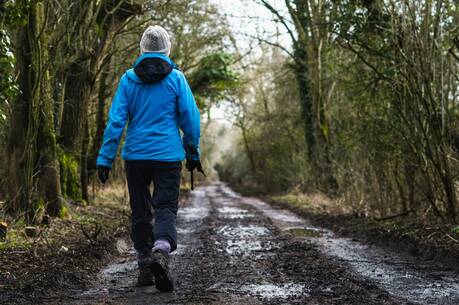Now, more than ever, God calls us to treat the sick with dignity
Today’s Gospel continues Mark’s account of Jesus’ ministry in Galilee. The reading offers a model for empathy and care for the sick.
Moved with pity, he stretched out his hand [and] touched him. (Mk 1:41)
What can you do to be a more compassionate person?
How do you treat people who are sick?
What in your life needs healing?
The first reading, from Leviticus, presents background information about Israelite perspectives on leprosy. The term refers to a variety of contagious and noncontagious skin conditions broadly called leprosy in biblical texts. Leviticus 13 includes a detailed discussion of how priests analyze symptoms and examine skin to determine remedies. As they were not physicians, the depiction of priestly involvement reveals a belief that divine healing and ritual acts of purification were required for certain ailments.
The abbreviated account we hear in the first reading states that if the priests determine a disease to be leprous, the sick person should physically change his appearance to signal that he has the illness, wearing torn garments and disheveled hair. He should also vocally proclaim himself unclean and enter isolation. The rationale for these actions was likely preservation of the community’s health, assuming the disease was contagious even if it was not definitely known to be so. Likewise, wearing tattered garments and unkempt hair were practices associated with public mourning, so the leprous person might be revealing grief over the diagnosis. While the intent behind the acts was probably not to humiliate people, these practices were probably emotionally damaging to the afflicted. Jesus’ interaction with a leprous person in the Gospel offers a more compassionate approach to caring for the sick.
At the start of his ministry, Jesus cures people with various diseases. Jesus encounters a leper who humbly asks for a healing if Jesus is willing to offer one. The Lectionary reading, and most other translations, affirm that Jesus, moved with pity, stretched out his hand, touched the person and verbally declared the disease to be cleaned. Some ancient manuscripts say that Jesus was moved with anger, which is a difficult reading that might suggest Jesus was angry at the disease for afflicting the person. Following the Lectionary rendering, Jesus’ compassion and pity find support later in the Gospel when Jesus multiplies the loaves and fish because he felt compassion for the people who were hungry (Mk 6:34).
The manner in which Jesus interacts with this person is significant. As we heard last week, when Jesus healed the woman with fever, Jesus physically touches people who are sick. In today’s Gospel, this has greater significance since there were taboos regarding ritual purity and contact with someone afflicted with leprosy. Jesus breaks these norms to offer physical touch as an element of healing. Jesus does follow the expected norm of having the healed person show himself to the priest and make an offering at the temple in gratitude for the blessing.
Notably, Jesus warns the man not to proclaim that he has been healed, which is a departure from the practice outlined in Leviticus, which required a public declaration of uncleanness. Such a declaration could be considered unnecessary since the skin was apparently healed. It could also reflect Jesus’ hesitation about making his abilities known to the larger community at this point in his ministry. Jesus may be cautious, knowing that some would reject him, or he may want his power to be revealed at a deliberate pace, culminating with the resurrection. Despite Jesus’ warning, the healed person opts to share the news freely, making Jesus even more popular with “people coming to him from everywhere.”
The Gospel reminds us to treat all people, especially the sick, with dignity, care and respect. Shaming or humiliating the afflicted is never acceptable. Moreover, even if isolation is required to avoid the spread of disease, people should not be forgotten. Jesus’ openness and compassionate touch are excellent examples for everyone, especially medical professionals, of how to interact with people in need of healing.
This article also appeared in print, under the headline “Compassionate Care,” in the February 2021, issue.









